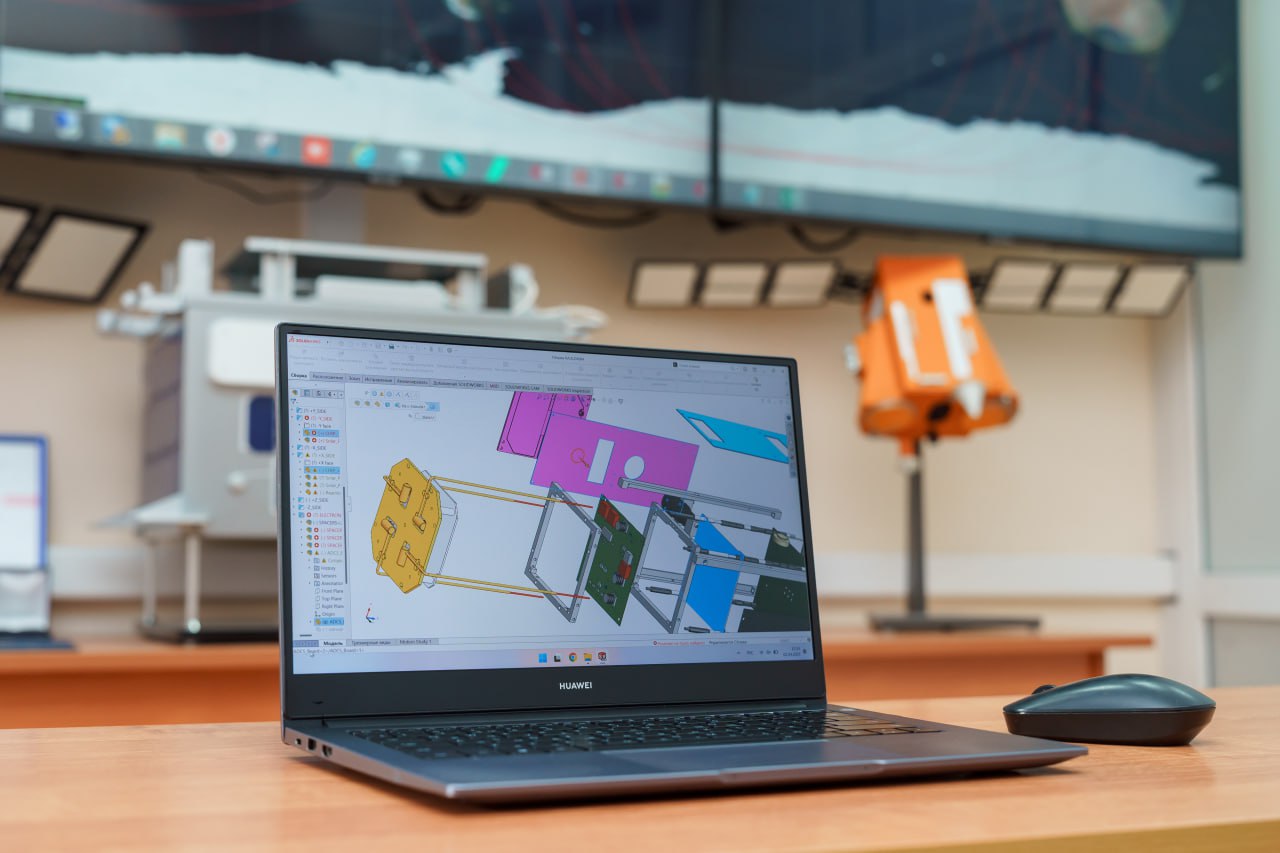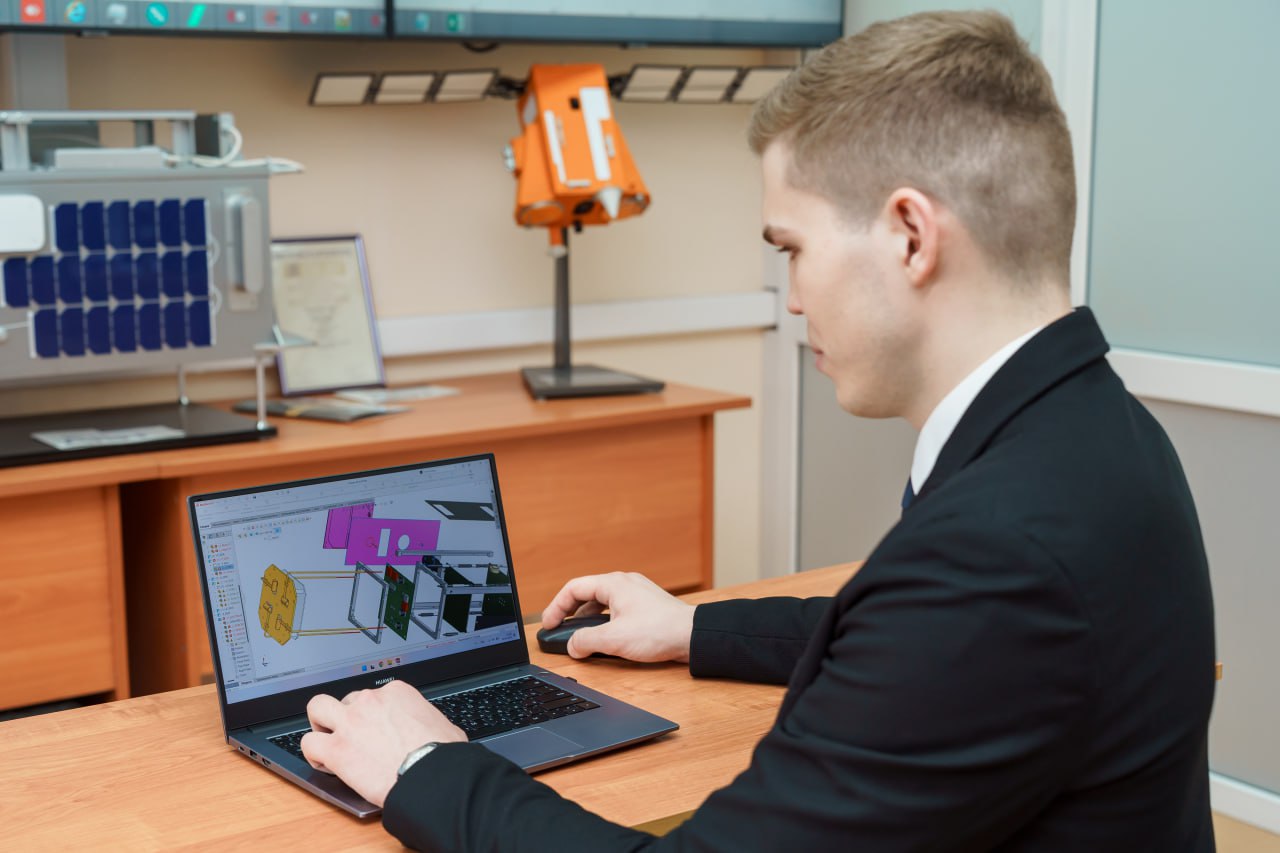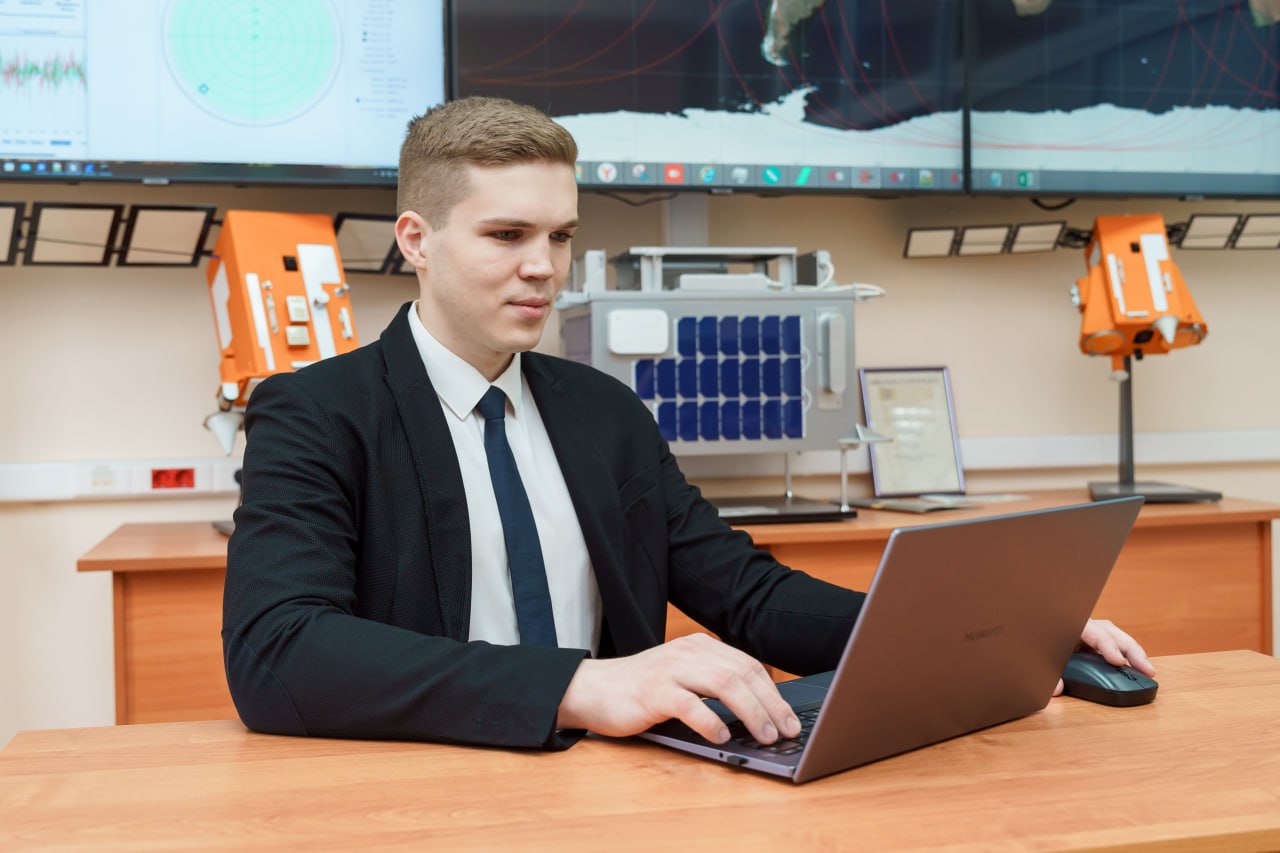Student of Samara University, Vadim Ignatiev, has developed a project for Russia's first nanosatellite platform, on the basis of which it will be possible to create nanosatellites of the cubesat format with artificial intelligence on board. A special neural network powered by a microcomputer will analyze and process the data received by the satellite directly in orbit, which will speed up the transmission of information to Earth several times due to effective data compression.
In addition, unlike the nanosatellite platforms currently available in Russia, the Samara development, due to the use of a larger area of highly efficient solar panels, will ensure a longer duration of active operation of the nanosatellite in space, and will also allow for a more energy-intensive payload in the form of instruments and scientific equipment to be installed on board.
The platform is called Phaeton and is similar to a space constructor. It consists of a set of standardized components, modules, software and systems that make it easy to integrate payloads and quickly create nanosatellites to meet customer requirements. The standard dimension of nanosatellites on the Phaeton platform is 3U, that is, three "units" or three "cubes". The overall dimensions of such a satellite are 10x10x34 cm. Up to half of the internal volume of the device is allocated for the payload. This project became one of the winners of the "Student Startup" competition of the federal project "Platform of University Technological Entrepreneurship" and received financial support from the Foundation for Assistance to Innovations in the form of a grant of 1 million rubles for a period of one year.
"The goal of this project is to offer universities and scientific institutions in need of creating their own nanosatellite, a more modern and efficient nanosatellite platform that allows them to quickly, in a short time, assemble a spacecraft of the required configuration according to customer requirements. The new platform makes it possible to significantly expand the types and sizes of the payload to be installed, solve the problem of low energy efficiency of nanosatellites, accelerate data transmission to Earth and extend the active life of the spacecraft in orbit. One of the distinctive characteristics of the platform is the use of neural networks, which were not previously used on domestic nanosatellites. The use of artificial intelligence and machine learning to process and compress data on board will ensure flexibility and efficiency in processing, storing and transmitting information from the payload," said Vadim Ignatiev, the author of the project.
According to him, if, for example, an optoelectronic complex for remote sensing of the Earth is installed on a satellite as target equipment, then the neural network analysis of the images obtained, conducted directly on board, will significantly increase the effectiveness of remote sensing. The neural network will be able to select the images most suitable for the task, improve the spatial resolution and restore a damaged or noisy image, as well as reduce the total file size through effective compression, which will directly affect the data transfer rate to Earth. Nanosatellite "intelligence" will be able to process any other data, not just images.
"Neural network processing will ensure data size compression by more than three times without loss, which will make it possible to save the necessary bandwidth of communication channels. As a result, the already processed data will be sent to the receiving and transmitting complex on Earth, which will increase the efficiency of communication sessions and save time. In addition, the saved bandwidth of communication channels allows you to install inexpensive transceiver systems on amateur radio frequencies, this solution reduces the overall cost of the platform – you will not need to spend money and time to obtain permission to use a high-speed radio link. But, of course, if a high transmission rate is needed for the payload to work, then high-speed radio equipment can also be installed," said Vadim Ignatiev.
According to the project, Phaeton's power system will be about two to three times more powerful than that of other nanosatellite platforms. Capacity reserves will increase due to the installation of additional collapsible solar panels using highly efficient photovoltaic converters based on gallium arsenide (GaAs).
"Compared to similar nanosatellites of a similar layout, the Phaeton platform provides for the installation of collapsible solar panels, which increases the working area of the panels by two to three times. The satellite's electricity generation will increase accordingly. This will make it possible to provide the necessary energy to the peripheral computing system and increase the maximum power for the payload up to 20 W, that is, customers – universities or scientific institutes – will be able to use more powerful and complex devices on their nanosatellites, which will expand the horizons of research and allow for more ambitious experiments," emphasized Vadim Ignatiev.
The project implementation team plans to produce a prototype of the first nanosatellite based on the Phaeton platform in 2026. Currently, there is an active recruitment of students who want to participate in this project and other innovative activities in the space industry.
For reference
Vadim Ignatiev is a 5th-year student specializing in Manned and Unmanned Spacecraft and Systems at Samara University, winner of the All-Russian Engineering Competition and the Student Innovation Projects Competition implemented in the Samara Region. At the Advanced Aerospace Engineering School (AAES) of Samara University, he participates in the work of the cyberphysical factory of small spacecraft.
 RU
RU  EN
EN  CN
CN  ES
ES 



